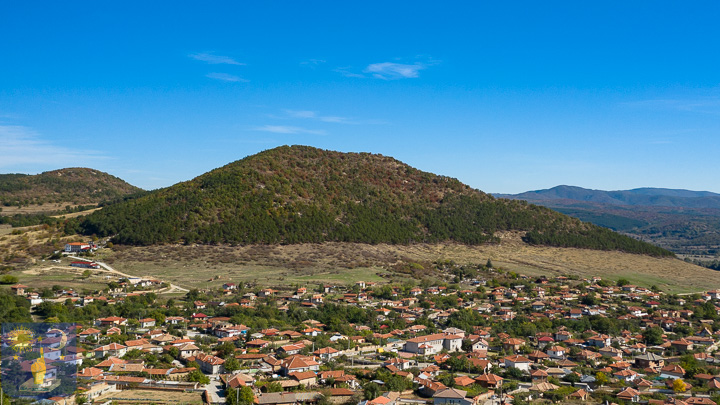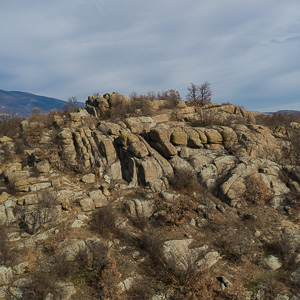
The density of megalithic sites in the region of the Middle Mountain is very high. It seems like the whole Middle Mountain is megalithic. And the sites are connected together forming patterns that remind us of constellations.
Size
In general the pyramids are smaller than the ones on the North side of the Central Balkan.
For example the Double Pyramid of Bania is proportionally half the size of that of Ostrets.
The Middle Mountain is a low altitude mountain range that varies between 300 metres and 700 metres altitude. The megalithic sites straddle the hills most often rising from the base to the summit.
The sites are relatively less eroded than sites further to the South East in the Eastern Rhodope mountain region. The region might have been protected from most flood events and high water levels by the Central Balkan mountain range to the North that raises to over 2000 metres elevation and the Rhodope mountains that also raise to similar elevation. It is also further away from the Black Sea basin.
There are many double pyramids and standing stones in this region. The double pyramids were probably built at the earlier Lemurian epoch whilst the standing stones and boulder type megaliths during the early Atlantean epoch.
The sites of the Middle Mountain usually have decorative standing stones that we do not find North of Central Balkan.
The Middle Mountain is characterized by the presence of standing stones that probably belong to the early Atlantean epoch.
There are 2 epochs of megalith building. The older, bigger and rougher shaped megaliths are below and form the overall structure of the pyramids. They often act as plinths for the smaller, newer and better finished ones. These older and bigger stones can be associated with the earlier Lemurian epoch and possibly Hanan Pacha period.
The newer rounded megaliths probably belong to the early Atlantean epoch and can be associated with the Urun Pacha period in Peru.
In the Middle Mountain band we found several stones that had skewer holes that are also called drill holes in Egyptology.
There are also stones with suture marks as if the granite had been pressed into shape in a mold like glass is produced today.
The stones found at most megalithic sites in the Middle Mountain band are black granite with high quartz content or yellow and granular as we see in Rozovets.
The different types of granite might reflect different epochs of production.
At most sites we find lines of quartz blocks in the granite. They form parallel grid lines that underpin the megalithic sites.
The band of megalithic sites in the Middle Mountain comprises:
-
Rozovets
Rozovets is one of the most extensive and best preserved megalithic sites in Bulgaria.
Sokolitsa
Sokolitsa is a double pyramid that has a triangular megalith that has a diagonal quartz line that is an expression of the golden ratio.
Stryama
The Pyramid of Stryama tells us how megalithic sites are connected as a network to form a grid.
Mihiltsi
Mihiltsi is a megalithic site that has both Lemurian and Atlantean stones.
Bania
The Double Pyramid of Bania is an elongated pyramid with 2 summits and concourse.
Begovo
The megaliths of Begovo are a cluster of stone formations positioned on top of a pyramidal formation.
Pesnopoy
The Double Pyramid of Pesnopoy is a very large pyramid that is aligned East-West.
Hisaria
Hisaria is a pyramid that is decorated with many clusters and standing stones.
Ivan Vazovo
Ivan Vazovo is a series of megalithic structures with large rounded boulders and standing stones.


